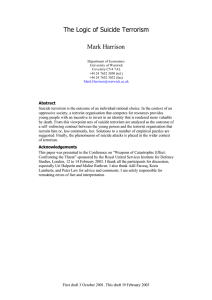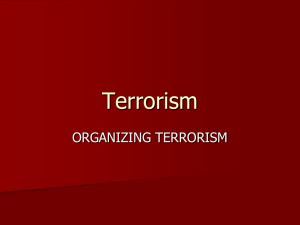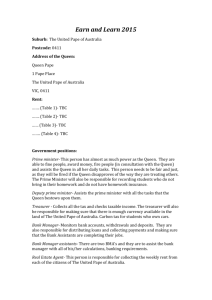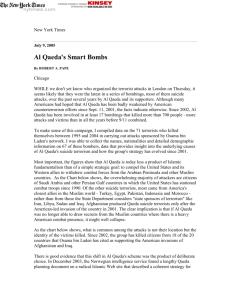Kristin Fabbe In
advertisement
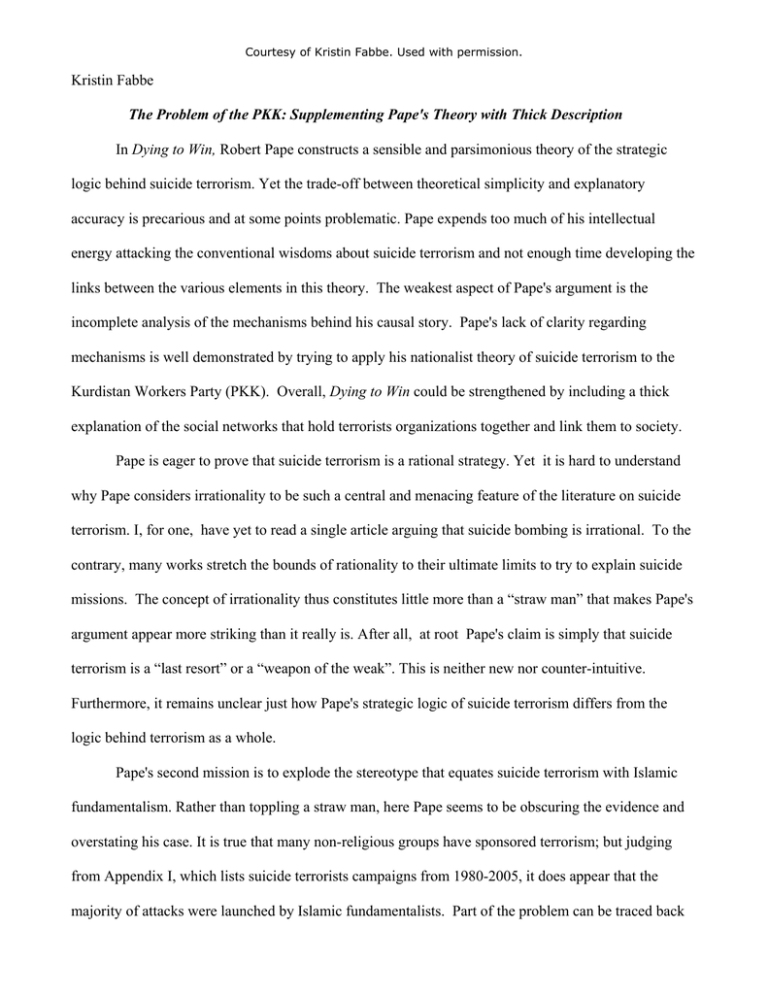
Courtesy of Kristin Fabbe. Used with permission. Kristin Fabbe The Problem of the PKK: Supplementing Pape's Theory with Thick Description In Dying to Win, Robert Pape constructs a sensible and parsimonious theory of the strategic logic behind suicide terrorism. Yet the trade-off between theoretical simplicity and explanatory accuracy is precarious and at some points problematic. Pape expends too much of his intellectual energy attacking the conventional wisdoms about suicide terrorism and not enough time developing the links between the various elements in this theory. The weakest aspect of Pape's argument is the incomplete analysis of the mechanisms behind his causal story. Pape's lack of clarity regarding mechanisms is well demonstrated by trying to apply his nationalist theory of suicide terrorism to the Kurdistan Workers Party (PKK). Overall, Dying to Win could be strengthened by including a thick explanation of the social networks that hold terrorists organizations together and link them to society. Pape is eager to prove that suicide terrorism is a rational strategy. Yet it is hard to understand why Pape considers irrationality to be such a central and menacing feature of the literature on suicide terrorism. I, for one, have yet to read a single article arguing that suicide bombing is irrational. To the contrary, many works stretch the bounds of rationality to their ultimate limits to try to explain suicide missions. The concept of irrationality thus constitutes little more than a “straw man” that makes Pape's argument appear more striking than it really is. After all, at root Pape's claim is simply that suicide terrorism is a “last resort” or a “weapon of the weak”. This is neither new nor counter-intuitive. Furthermore, it remains unclear just how Pape's strategic logic of suicide terrorism differs from the logic behind terrorism as a whole. Pape's second mission is to explode the stereotype that equates suicide terrorism with Islamic fundamentalism. Rather than toppling a straw man, here Pape seems to be obscuring the evidence and overstating his case. It is true that many non-religious groups have sponsored terrorism; but judging from Appendix I, which lists suicide terrorists campaigns from 1980-2005, it does appear that the majority of attacks were launched by Islamic fundamentalists. Part of the problem can be traced back Courtesy of Kristin Fabbe. Used with permission. to Pape's unit of analysis. Pape asserts that he is primarily interested in suicide campaigns but then often illustrates his points using individual attacks (17). The fact that the stated agenda of the sponsoring group is often different from the individual motivation of the bomber only further complicates the matter. Additional problems with Pape's reasoning become manifest when we attempt to apply his “nationalist theory” of suicide terrorism, which is focused around the concepts of occupation, religious difference, community support and democratic targets, to the case of the PKK. Ostensibly the PKK should fit nicely with Pape's “nationalist” theory since the group's ultimate objective is the creation of a Kurdish state. Yet on a closer look, the PKK case does not appear to conform to any of the theories other conditions. First, regarding the issue of occupation, the PKK is essentially a separatist movement seeking to break away from the Turkish state. It is difficult to claim that the Turks are “occupying” Kurdish land, for the region in South Eastern Turkey where most Kurds live is also home to a large number of Turks. And though it is true that the Kurdish minority has been the victim of horrific statesponsored campaigns of repression, it is hard to see these campaigns as equivalent to the direct foreign intervention taking place in Iraq. This critique applies to other cases as well. Al Qaeda, for example, is a transnational organization with members from numerous countries, many of which are not occupied by the US. In order for Pape's broad definition of occupation to be convincing, more needs to be said about the nature of the relationship and the mechanisms linking occupation to rebellion. On the issue of religious difference, the PKK again fails to fit with Pape's theory. The majority of both Turks and Kurds are Sunni Muslims. Although a substantial number of Kurds in Turkey are Shia Alevis (about 30%), there is no evidence that religious difference has motivated the Shia Alevi Kurds to join the PKK in larger numbers than Sunni Kurds, as Pape's theory would predict. The PKK also fails to meet Pape's theoretical requirement of broad community support. Most Kurds do not support the PKK, either explicitly or passively. In fact many Kurds have opted to assimilate to the dominant Turkish culture and a large number actually support the Turkish state against the radical Courtesy of Kristin Fabbe. Used with permission. Kurdish separatists. Lastly, the potentially problematic nature of Pape's emphasis on democratic targets is also illustrated by the Kurdish case. In a “note” in Appendix I Pape remarks that there have been reports of Kurdish suicide missions in Iraq but that the press coverage does not “distinguish a suicide attack from suicide to avoid capture”(269). This fact makes me wonder if Pape's finding that most attacks are against democratic targets is spurious. Since democracies often have a more open media and better information collection agencies than authoritarian regimes, could it not be the case that we simply know more about the terrorist attacks that take place in Democratic countries? These critiques do not mean that Pape's work is not valuable. The PKK very well may be an outlier not captured by an otherwise powerful theory. Yet to convince us of this, Pape needs to tell a detailed story of how and why the Kurdish public failed to embrace the PKK in the same way that, say, the Lebanese embraced Hezbollah. Was it because the PKK failed to produce social services and goods or because they were not able to fully demonize the Turkish state due to a shared religious identity? If we are really to believe that terrorist organizations are not cult-like factions operating on the fringes of society, more needs to be said about how these organizations gain their moral authority. This is especially true in the case of transnational organizations like Al Qaeda. Instead of simply using broad statistical correlations and a handful of short case studies, Pape could have strengthened his causal claims by adding a thicker description of the dynamics between terrorist organizations and society at large.

